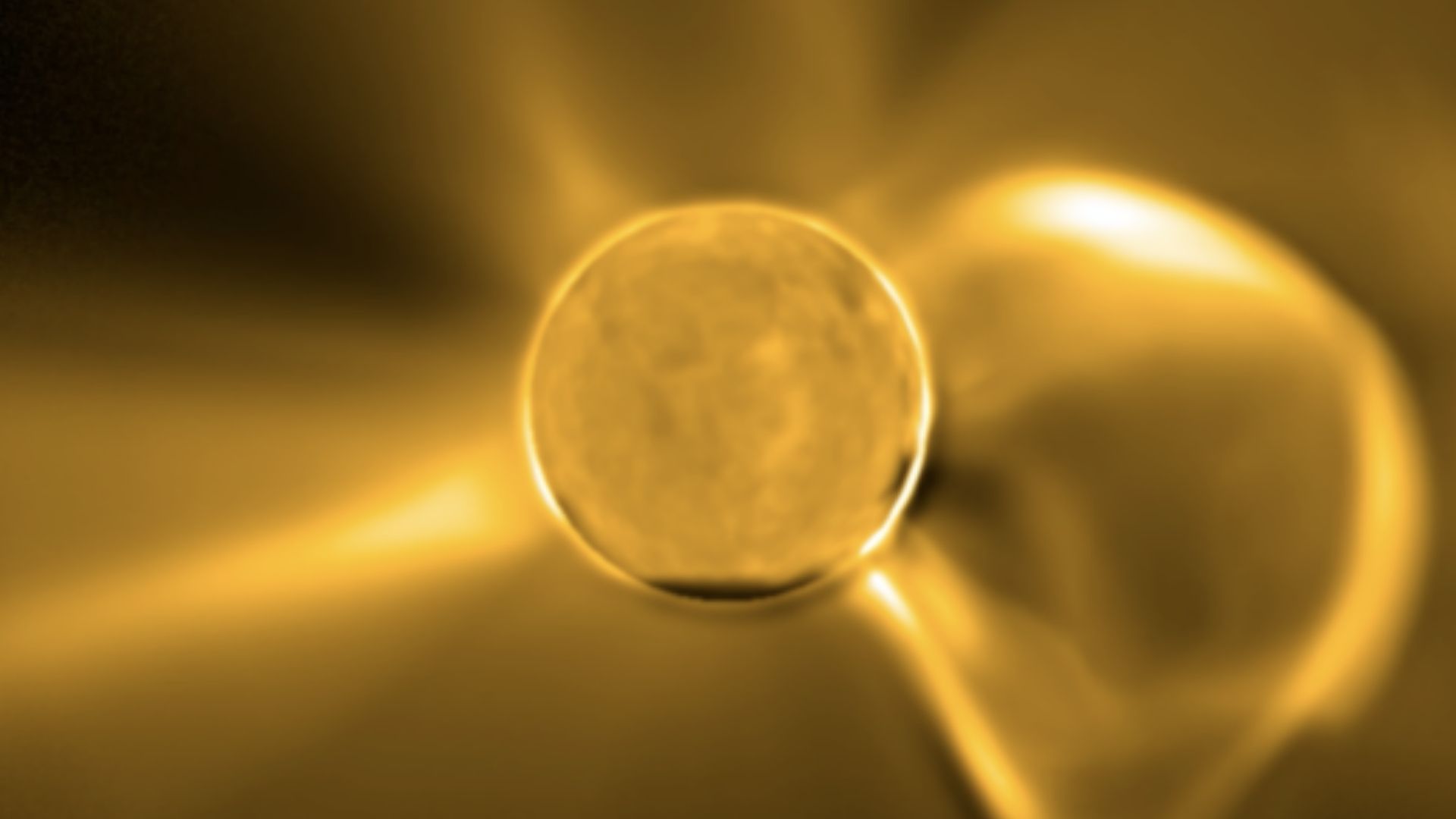
Two new CubeSats, to be built by the Laboratory for Atmospheric and Space Physics (LASP) at the University of Colorado Boulder, will provide first-of-their-kind measurements of gravity waves in Earth’s upper atmosphere and explosions in the Sun’s corona. This information will fill existing data gaps that are urgently needed for scientists to better predict the effects of space weather on critical human infrastructure and technologies, from satellites in low-Earth orbit to radio communications on airplanes.
NASA announced the agency’s Heliophysics Division will contribute $14 million to fund both the DYNamics Atmosphere GLObal-Connection (DYNAGLO) and the Sun Coronal Ejection Tracker (SunCET) missions. The announcement came this week during a presentation by Jim Spann, space weather lead at NASA Headquarters in Washington, D.C., at the American Geophysical Union Fall Meeting in New Orleans, Louisiana.
“We’re taking advantage of gains in small spacecraft technology to fill some of these critical gaps and evaluate how that advances our understanding of space weather and enables improvement of forecasting capabilities,” Spann said in a NASA feature article that accompanied the announcement.
LASP has played a leading role and been very successful in developing small satellite technologies to address key scientific questions—a trend the new missions will help continue. “NASA clearly demonstrates its resolve to open up opportunities to the next generation of space scientists with the selection of both SmallSats, which were led by two very talented scientists who will now have the opportunity to lead their first space science missions,” said Rick Kohnert, the LASP SmallSat Program Manager. “It also reflects a clear vote of confidence in our laboratory’s scientific and engineering capabilities.”
DYNAGLO: understanding how weather propagates through Earth’s atmosphere into space
DYNAGLO will be the first mission to globally map and characterize atmospheric gravity waves present in Earth’s thermosphere; the data will fill a crucial observation gap in the ionosphere-thermosphere region. “These measurements have eluded scientists for decades, but are urgently needed,” said Aimee Merkel, the LASP atmospheric research scientist who will lead the mission. “They are the missing piece to the puzzle of how energy and momentum balance out in this region of the atmosphere and affect space weather.”
Gravity waves play an important role in the weather throughout Earth’s atmosphere by depositing turbulent energy that affects the circulation and temperature of local air masses. They are often generated from air flow over high mountain ranges such as the Andes in South America or from large convective storm fronts generated near the equator. The waves travel vertically, shaping the ‘weather’ in each atmospheric layer.

It’s currently unknown what spectrum of gravity waves makes it up to Earth’s uppermost atmosphere, but Merkel said the new mission will change this. “Very little is known about the influence of dynamics in the thermosphere. DYNAGLO will allow us to study in unprecedented detail how terrestrial weather from below directly impacts space weather above,” said Merkel, who has the honor of being the lab’s first female principal investigator of a space-flight mission.
The DYNAGLO mission will consist of a constellation of two 6U CubeSats flying in a string-of-pearls formation. CubeSats are small satellites built in units (“U”) measuring 10 x 10 x 10 centimeters. Each CubeSat will host a newly developed, miniaturized Far Ultraviolet Imager (FUVI) instrument that Merkel and her team designed to have enough sensitivity to measure the smallest wiggles in air perturbations associated with gravity waves. “It’s very challenging to measure small atmospheric changes in this region of the atmosphere,” said Merkel. “This mission will allow us to demonstrate that our technology could be used to monitor gravity waves on future Earth observatories.”
SunCET: tracking massive solar explosions to protect critical infrastructure
SunCET will study explosions that frequently happen in the Sun’s corona. Known as coronal mass ejections, each of these liberates massive amounts of energy—roughly ten times the amount released by the asteroid impact that wiped out the dinosaurs. The mission will be led by James Mason, a researcher affiliated with LASP and the Applied Physics Laboratory at Johns Hopkins University.
“It’s important to track the position, speed, and acceleration of these solar eruptions so that we can better predict the physics that drives them,” said Mason. This is important, he said, because when they’re directed toward Earth, these explosions can disrupt the power grid and potentially cause widespread power outages. They can also interfere with other crucial technologies like radio communication on airplanes and GPS.

But obtaining these measurements is easier said than done. “It’s challenging to get images of these eruptions because the solar disk is incredibly bright, whereas the corona around it is much dimmer, and these eruptions traverse that entire range,” said Mason. Previous instruments had to choose between looking just beyond the bright solar disk, or blocking out the disk and low (closest) corona. This, said Mason, leaves a critical gap right where the eruption most quickly accelerates.
SunCET solves this problem by using a new camera system developed at LASP that can simultaneously image the disk with very short exposures and the corona with long exposures. The Applied Physics Laboratory will design the telescope to focus light for the camera. The instrument will fit inside a 6U CubeSat, which the team plans to launch in late 2024, a period when the Sun is expected to be producing hundreds of these eruptions per month.
LASP: a leader in miniaturized instrumentation
LASP has been leading the development of miniaturized instruments for space science across multiple disciplines. The laboratory also produced the first peer-reviewed publication of data obtained from a CubeSat.
“Developing miniaturized instruments like FUVI and SunCET are critical technological enablers for the next generation of Earth observatories,” said Carl Gelderloos, LASP’s Technology and Business Development Lead. “And the science return per dollar is truly game-changing,” he added. “We’re honored to have NASA trust us to develop these missions.”
Written by Willow Reed and Terri Cook – LASP Communication Specialists



